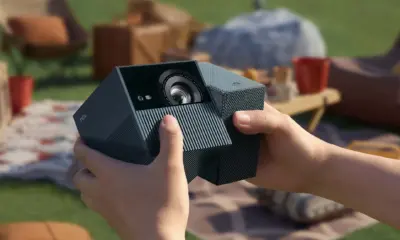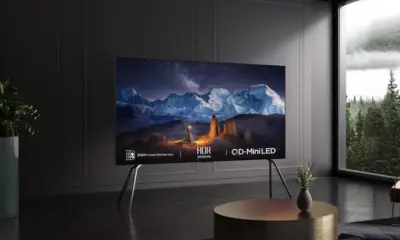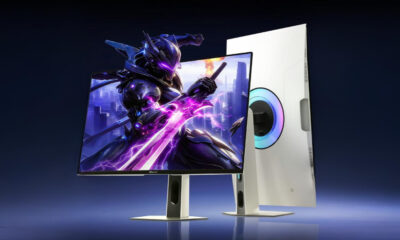Featured
How to Calibrate Your TCL TV for the Best Picture Quality
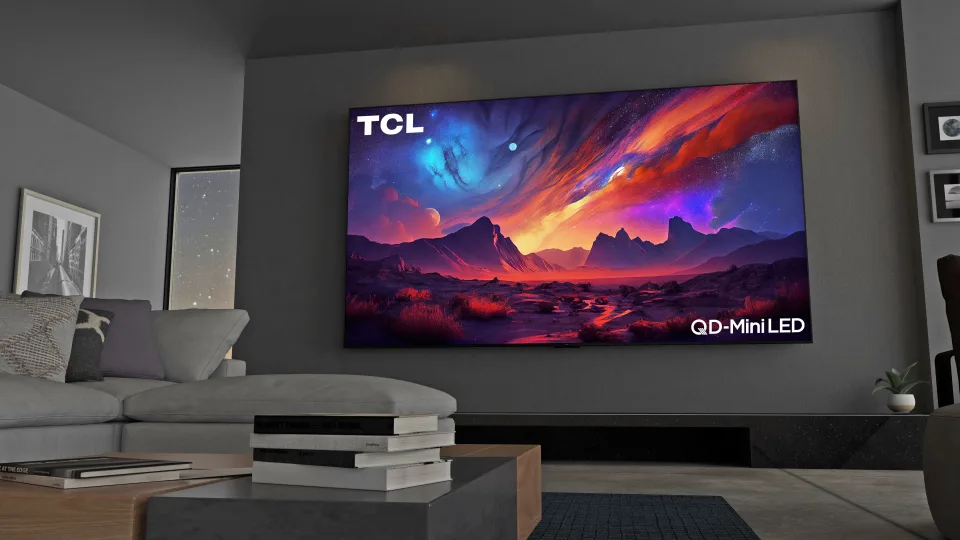
TCL TVs sold in the U.S., from budget 4-Series models to high-end QLED and Mini LED sets, include a wide range of picture settings. With a few careful adjustments, users can unlock much better image quality across all content types.
This guide outlines how to set up your TCL TV for Movies, Gaming, Live TV and Streaming, and Sports. It covers both SDR and HDR (including Dolby Vision) content and explains platform differences between Roku TV and Google TV.
Before You Start: Turn Off Eco and Adaptive Settings
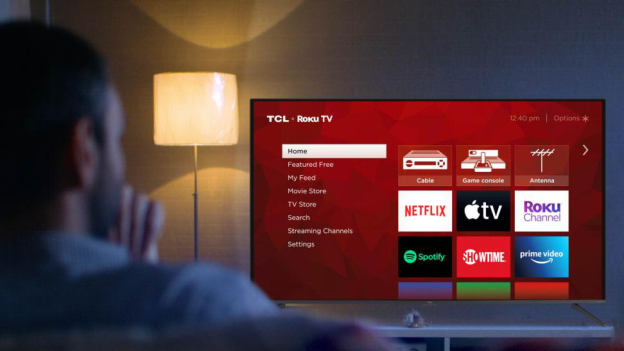
Before adjusting any picture controls, users should disable automatic features that interfere with consistency. On Google TV models, go to Settings > System > Power & Energy and turn Energy Saver off. Also, turn off Adaptive Brightness, Contrast, or any Intelligent Picture options in the settings. On Roku TVs, set TV Brightness to Normal under the general settings menu. These steps ensure the TV will not override manual picture settings.
Movies and Cinematic Content
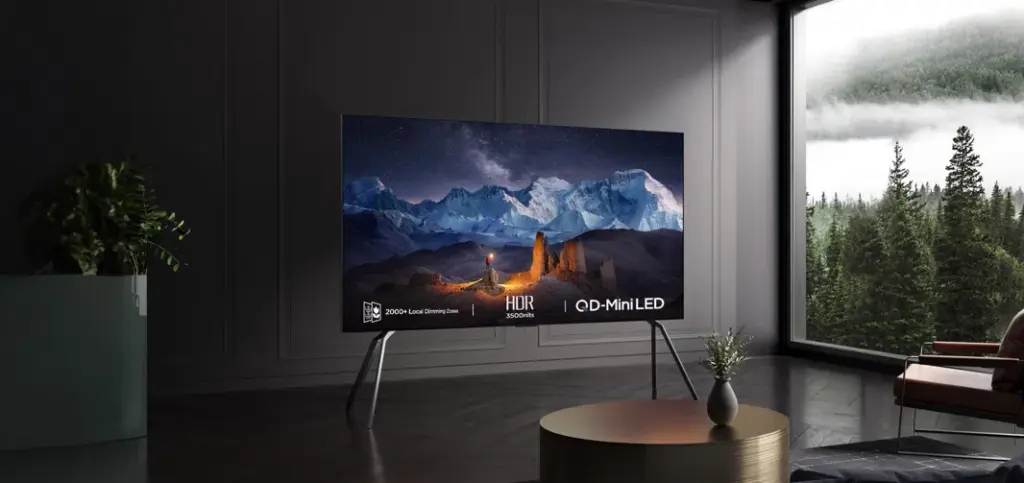
To get a film-accurate image in a dark room, start with the Movie picture mode. This preset reduces backlight intensity, warms the color temperature, and disables motion smoothing. On Roku TVs, press the star (*) button during playback to access the picture menu and select Movie. On Google TV, go to Settings > Picture > Picture Mode and choose Movie.
Adjust the backlight based on the lighting in your room. For a dim home theater, a 40–50% backlight level works well. In a brighter room, raise it to around 70–80%. Set contrast to 90 or higher for strong highlights. Use the Warm color temperature setting for more natural skin tones. Set Sharpness to 0 to avoid artificial outlines and turn off any motion smoothing options like Action Smoothing or Motion Clarity.
For HDR10 content, keep the Movie mode active, set Backlight and Contrast to 100, and turn Local Dimming or Local Contrast to High. On Dolby Vision content, choose Dolby Vision Dark for night viewing or Dolby Vision Bright in a well-lit room. TCL locks most settings in Dolby Vision mode, but users can still adjust brightness based on viewing conditions.
Gaming (Console and PC)
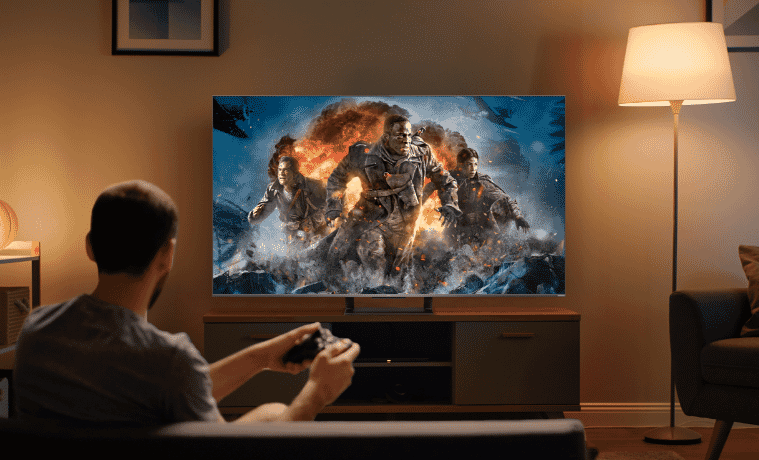
TCL TVs include a Game Mode that reduces input lag by disabling unnecessary processing. On Roku TVs, access this under Advanced Picture Settings. On Google TVs, either switch to the Game picture mode or ensure Game Mode or ALLM is enabled when a console is connected.
Keep contrast high and backlight at maximum for HDR gaming. Use Warm color temperature for accurate colors. Set Sharpness to 0 and turn off noise reduction. In HDR games, verify that Local Dimming is still set to High if available. Users should also calibrate HDR using their console’s built-in utility.
For Xbox and PC users with supported TCL models, enable VRR and connect through HDMI 2.1 ports. TCL automatically detects variable refresh signals when Game Mode is active. If the TV shows brightness fluctuations during VRR gameplay, consider setting Local Dimming to Low to stabilize the image.
PC users should rename the HDMI input to “PC” or “Computer” to force 4:4:4 chroma and better text clarity. Set the GPU to output Full Range RGB and ensure the TV’s black level is not clipping shadow detail.
Live TV and Streaming
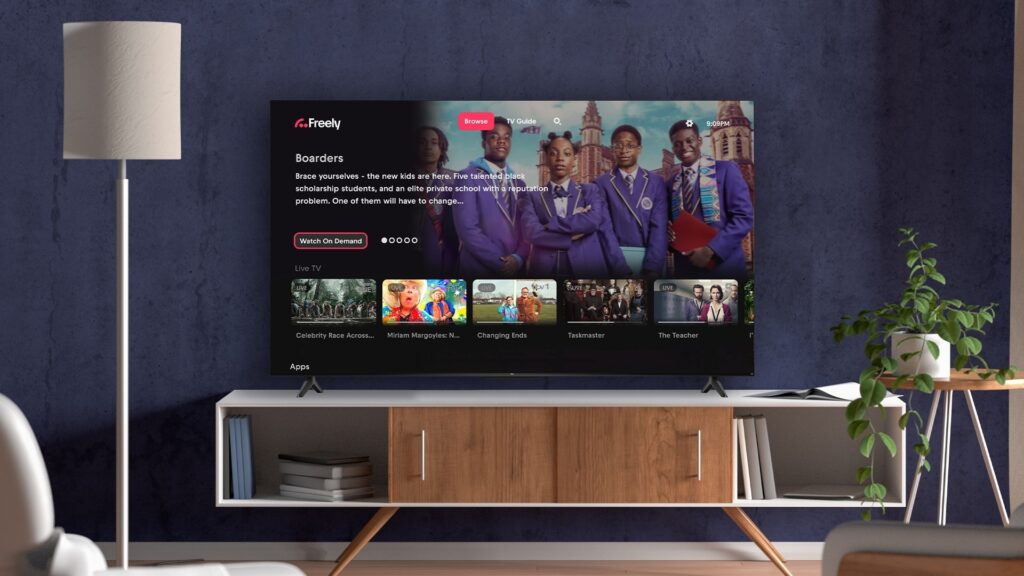
For general TV watching, use the Standard picture mode. This profile balances brightness, contrast, and color for a wide range of content. Raise the backlight to suit your room lighting. On Roku TVs, select a brighter preset if you are watching during the day. On Google TVs, push the Brightness slider to around 70–100, depending on ambient light.
Keep contrast high and adjust color temperature to Normal or Warm if faces appear too cool. Moderate sharpness, around 10 to 20 on a 0–100 scale, helps with cable news or older YouTube content. Use Low or Auto noise reduction if the signal is low-quality. For motion, enable Low smoothing if you want smoother camera pans, or leave it off for a more natural feel.
In HDR or Dolby Vision streaming, use HDR Bright or Dolby Vision Bright modes for daytime viewing. These modes raise midtones to prevent images from appearing too dim in well-lit rooms. For evening or dark-room viewing, switch to HDR Dark or Dolby Vision Dark for a more accurate tone curve.
Sports Viewing
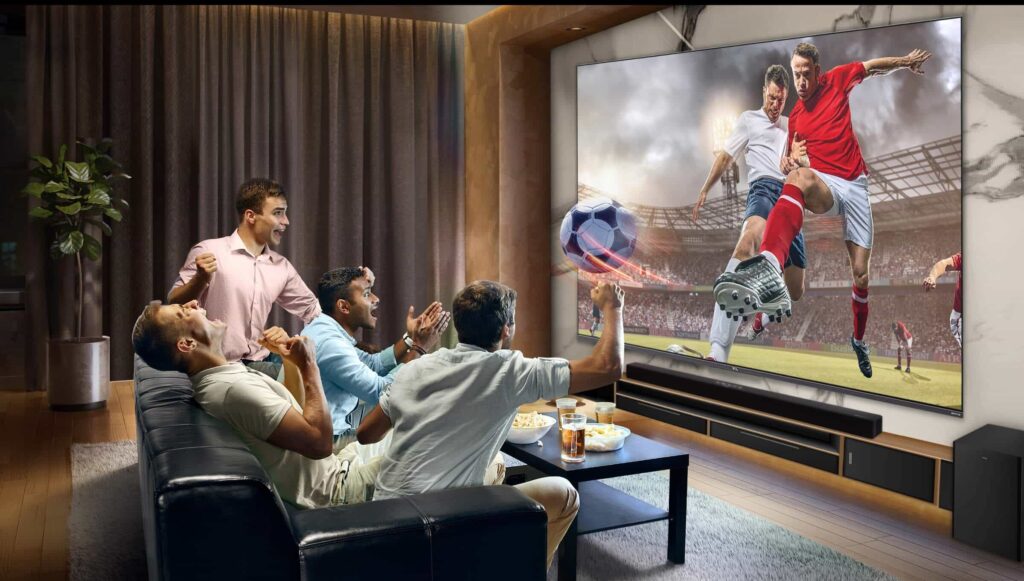
TCL’s Sports mode is tuned for fast motion and bright environments. Activate this mode during live games to boost clarity and motion smoothness. It increases backlight, contrast, and sharpness and often sets the color temperature to Cool.
Set Backlight and Contrast to 100 to maintain visibility in bright rooms. Sports mode typically enables aggressive motion interpolation by default. On Google TVs, set Blur Reduction and Judder Reduction sliders to high values. On Roku TVs, use Action Smoothing = High. This ensures players and fast-moving objects remain visible during pans.
Use a higher color saturation level (around 55–60) to make team jerseys and field colors look more vibrant. Avoid pushing this too far, or faces may look unnatural. Leave Clear Motion or LED Motion off to avoid flickering and loss of brightness.
For HDR sports, use HDR Bright or a bright Sports HDR mode if available. Keep Local Dimming on High to maintain image depth.
Final Thoughts
Each TCL model may have slight differences in menu structure, but the core settings remain consistent. Disable adaptive features, choose a mode based on the content type, and fine-tune color and brightness to suit your environment. Calibrating each HDMI input separately ensures every source looks its best, whether you are watching a film, gaming online, or streaming daytime TV.
In related news, we recently broke down how TCL’s inkjet-printed OLED technology works and explored what makes the TCL Z100 soundbar stand out.
Buying Guides
Best TCL TVs Under $500 You Can Buy in 2025
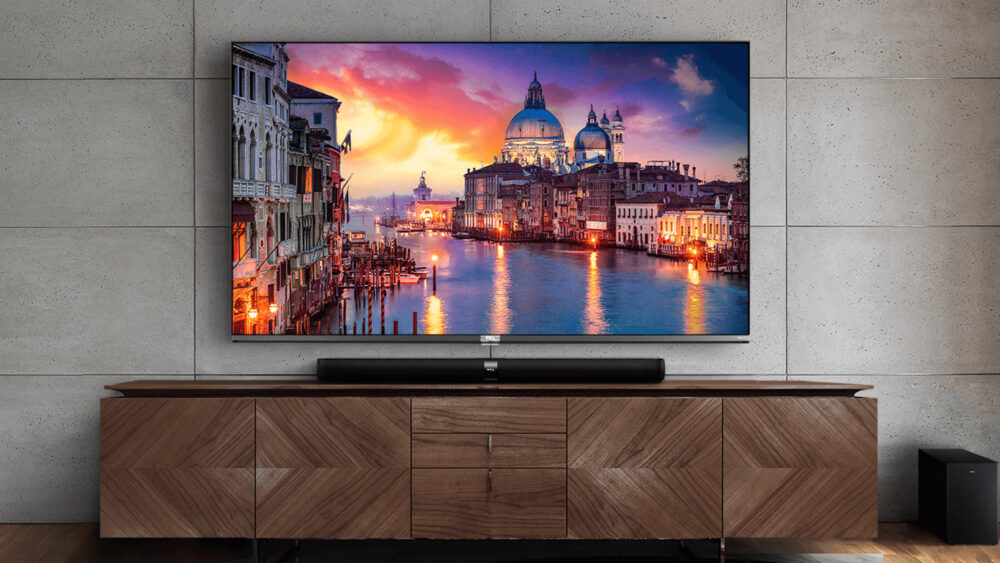
What sets TCL apart from other brands when it comes to TVs is the pricing. The company offers a wide range of options in the sub $500 category, where you can easily score models with 50-65-inch sizes. When there are many options, picking the one TV that suits your needs can get tough. Below are five strong options in the sub $500 price segment to clear that confusion.
Best TCL TVs Under $500
1. TCL QM6K Mini-LED
– Best Overall Under $500
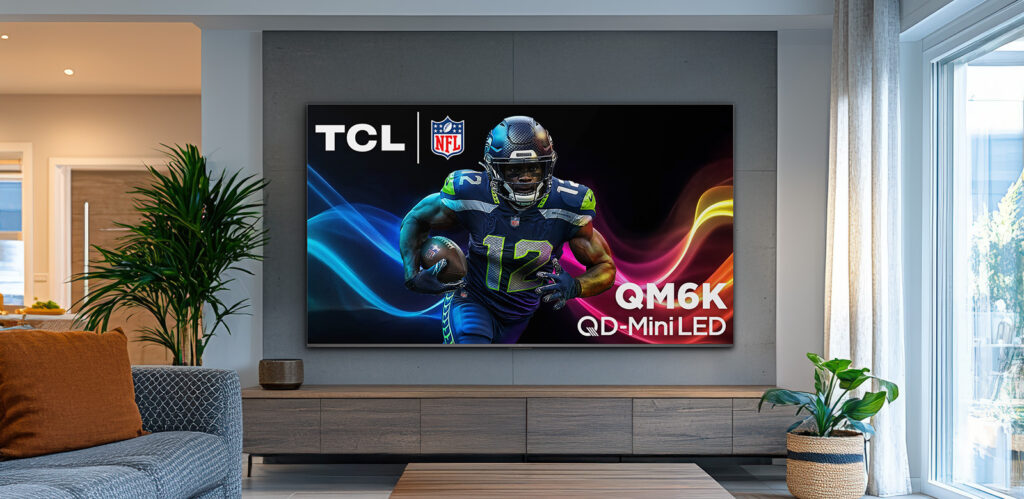
The TCL QM6K is considered TCL’s best-value Mini-LED TV. This brings quantum dots, up to 500 local dimming zones, and around 700-nit HDR brightness at budget prices. You get a 144Hz native refresh rate, Motion Rate 480 with MEMC Frame Insertion, AIPQ Pro Processor with Deep Learning AI, and Google TV smart OS. The TCL TV gets new Filmmaker Mode, IMAX Enhanced Certification, and Dolby Vision IQ. For audio, the TV gets you an Onkyo 2.1 speaker system with Dolby Atmos and DTS Virtual: X.
It is available in multiple sizes from 50 to 65 inches. You can score the 65-inch model for under $500 during the holiday sale.
2. TCL QM5K Mini-LED
– Runner-Up Picture Quality

This Best Buy-exclusive TCL QM5K Mini-LED TV comes with up to about 300 local dimming zones. It offers contrast close to the QM6K but with a 60Hz native panel. There’s an Onkyo 2.1 speaker system with Dolby Atmos and DTS Virtual: X. The AiPQ processor uses AI to control contrast, motion, color, clarity, and upscaling. There’s HDR10 Pro+ with HDR10+, HDR10, and HLG, and 240Hz Motion Rate.
The 65-inch model, during promotions, can be yours for just $450, making it an ideal recommendation while also saving some bucks.
3. TCL T7 Series
– Newest Model
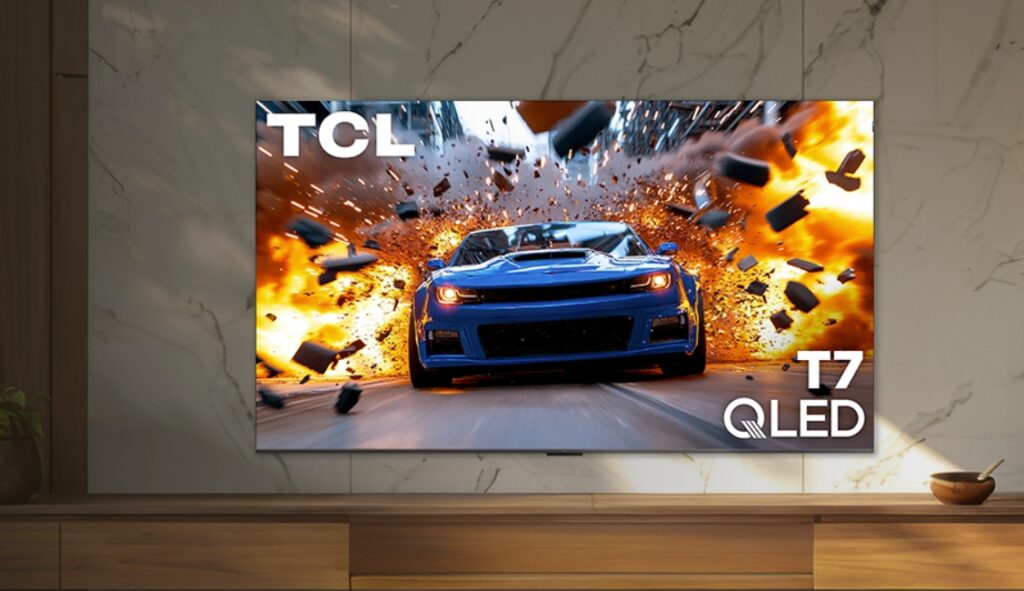
TCL T7 series is the brand’s new lineup that offers the latest and most modern features that one will expect. You get a QLED-Quantum Dot Technology panel with a 4K UHD panel. For gamers, this is a delight as it’s the official partner of the Call of Duty game. To that extent, you get a 120Hz high refresh rate, with a 144Hz variable refresh rate.
There’s TCL’s AiPQ processor to enhance the display experience, Game Accelerator 288, HDR Pro+ with Dolby Vision, HDR10+, HDR10, & HLG. The lineup gets Google TV OS with hands-free voice control, voice remote, Google Chromecast built-in, and AirPlay 2. Audio enthusiasts will be happy to know there’s Dolby Atmos support.
The 55-inch size is available for $380 on Amazon during this holiday season. If you have the budget, you can stretch to $500 and get the 65-inch variant.
4. TCL 4-Series / S455
– Cheapest 4K Roku TV
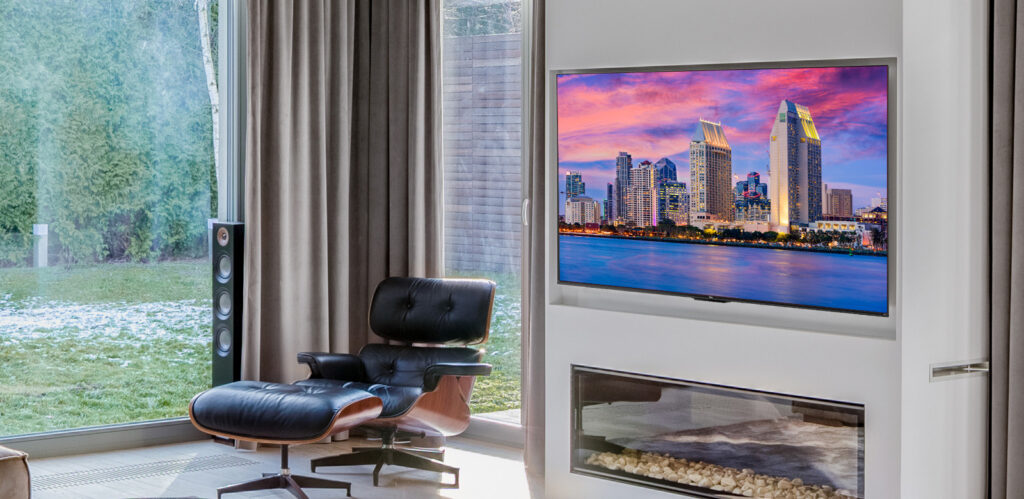
The TCL 4-Series/S455 is one of the most popular entry-level 4K Roku TVs, especially now that it’s available at its low price. It uses a VA panel with relatively high native contrast and good black uniformity, which helps dark scenes look more convincing than on many other cheap edge-lit sets, even though it lacks local dimming entirely. You get easy voice control with Siri, Alexa, and Hey Google. The edge-to-edge design blends nicely in your living room. You can stream free TV, live news, sports, movies, etc.
It is not ideal for demanding HDR or serious competitive gaming, but for casual streaming, broadcast TV, and general use, it offers consistent performance and one of the most user-friendly smart platforms available. The 43- and 50-inch S455 models are currently available for $400 and $500, respectively.
5. TCL S4 / S450G
– Budget 4K with Google TV
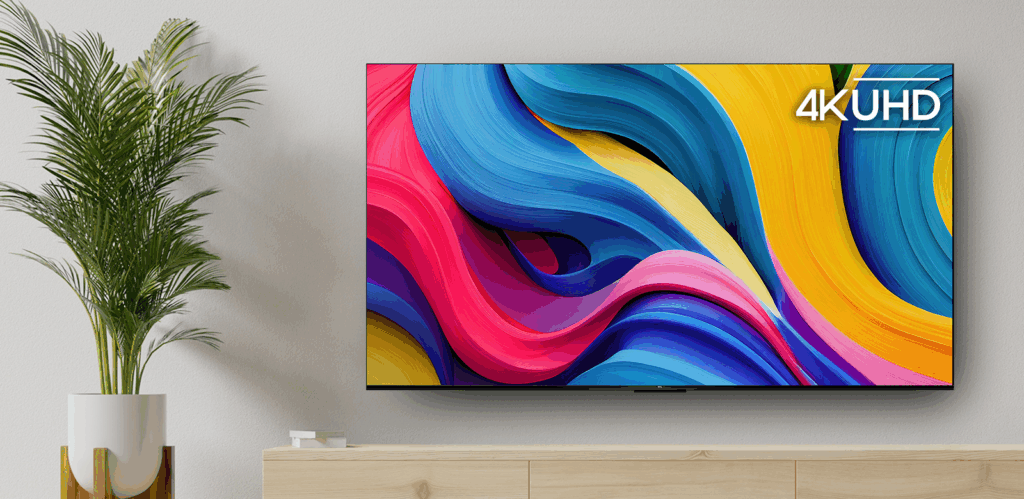
This one is for viewers who prefer Google’s ecosystem and want to minimize spending. This budget TV brings a 4K panel with decent color accuracy and low input lag. It is suitable for light gaming and your everyday streaming needs. This gets HDR Pro (Dolby Vision, HDR10, & HLG), Motion Rate 240 with MEMC Frame Insertion, and Auto Game Mode (ALLM).
For audio, the TV gets you Dolby Atmos and DTS Virtual: X. There’s Chromecast built-in, 3 HDMI inputs, and dual-band Wi-Fi. For around $500, you can get the 58-inch size for $380, while the 65-inch size version is available for $530 during the holiday sale. While it does not offer local dimming or high-end HDR performance, the combination of 4K resolution, Google TV interface, and low cost makes it a strong “no-frills” smart TV for secondary rooms or first-time 4K buyers.
Key Specs at a Glance
| Model | Panel / Tech | Strengths | Typical size under $500 |
|---|---|---|---|
| TCL QM6K | QD Mini-LED, 144 Hz | Best all-around image and gaming under $500 | 55-inch (often 65-inch on sale) |
| TCL QM5K | QD Mini-LED, 60 Hz | Best 65-inch picture quality under $500 | 65-inch |
| TCL T7 | QLED, up to 120 Hz | Balanced image and gaming under $500 | 65-inch |
| TCL 4-Series S455 | LED, 60 Hz | Cheapest decent 4K Roku TV | 43-55 inches |
| TCL S4 / S450G | LED, 60 Hz | Low-cost 4K with Google TV | 55-65 inches |
How to Choose the Right TCL TV Under $500
When buying a TV, you’ll have to start planning with room size and viewing distance. The 55-inch screen is a sweet spot for most living rooms. While the 65-inch version offers a more cinematic feel, it requires a bigger room to make the experience more pleasing. If you care about movie-like contrast and regularly watch HDR content in dim lighting, you are better off with the Mini-LED QM6K or QM5K for their local dimming and higher brightness.
For gamers, it’s always ideal to have a TV with a higher refresh rate and low input lag. Here, the QM6K and TCL T7 are particularly attractive due to their higher-refresh gaming modes. If you’re not that into the technical details and want a TV just for casual streaming, the inexpensive 4-Series S455 or S4/S450G offer plenty of value.
In related news, TCL recently launched the A400 Pro QD Mini LED Art TV with a 4K 144Hz display.
Buying Guides
What’s So Special About TCL T7 4K QLED Smart TV?
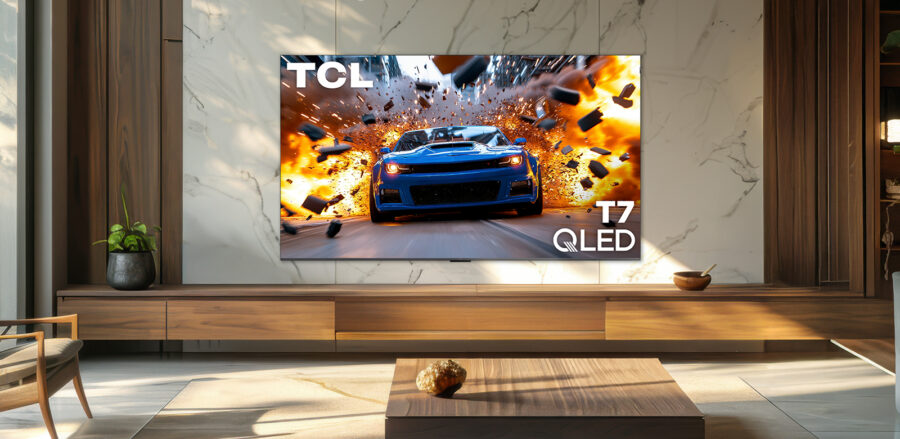
TCL has recently launched the TCL T7 4K QLED Smart TV series as its latest mid-range television lineup. The series includes 4K UHD resolution, QLED panels, high refresh rates, and Google TV integration. TCL positions the T7 as a premium entertainment and gaming TV that targets mainstream buyers without pushing the price too high.
Premium Looks Meet Sensible Design
TCL uses a bezel-less design across all T7 models. The TVs feature a minimalist look that suits wall mounting or table placement. TCL includes adjustable-width feet to allow more flexibility for setups with soundbars or compact entertainment units. This small design choice improves usability, especially in tighter spaces. Despite falling in the mid-range category, the T7 models look refined and clean.
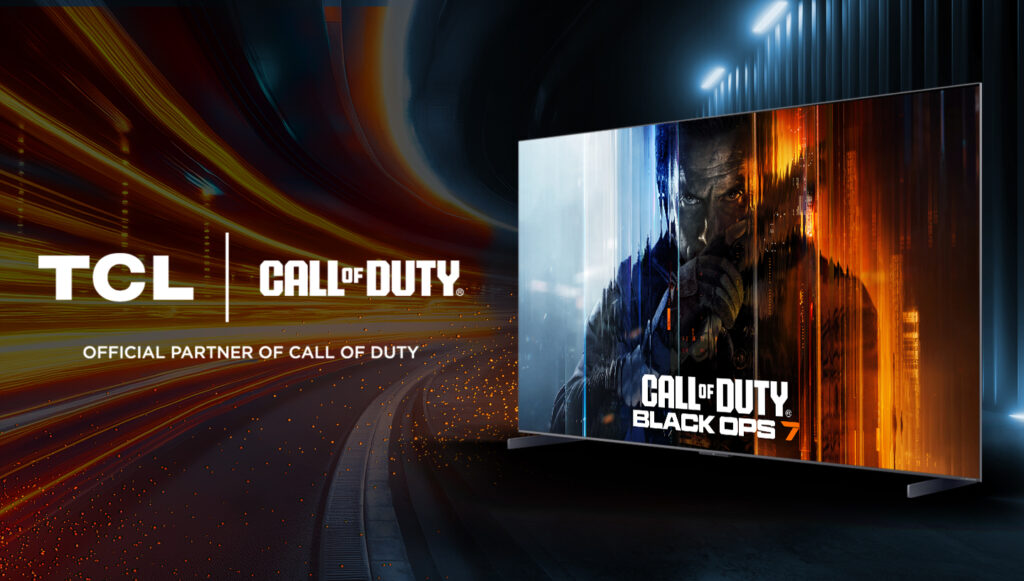
QLED Visuals With 144Hz Sweetness
All four models in the T7 lineup support 4K resolution at 3840 × 2160. The 55-inch variant uses a 120Hz panel, while the 65, 75, and 85-inch versions move up to a native 144Hz refresh rate. This high refresh rate improves fast-motion clarity in games and sports content.
TCL adds support for variable refresh rate (VRR), Auto Low Latency Mode (ALLM), and Game Accelerator. The 85-inch model can reach up to 288 VRR, which helps reduce input lag during gameplay. These features make the T7 Series suitable for console and PC gamers who want smoother motion and lower latency.
All the HDR Formats You Could Ask For
TCL supports a wide range of HDR formats on the T7 Series. Each model handles Dolby Vision, HDR10+, HDR10, HLG, and Open HDR. This broad compatibility allows content from most major streaming platforms to play in the intended HDR format.
The AiPQ Pro processor powers TCL’s picture enhancement. It adjusts image settings in real time to boost contrast, color accuracy, and detail sharpness. The QLED panel supports 1.07 billion display colors and uses a high-brightness LED backlight to improve image clarity in bright environments.
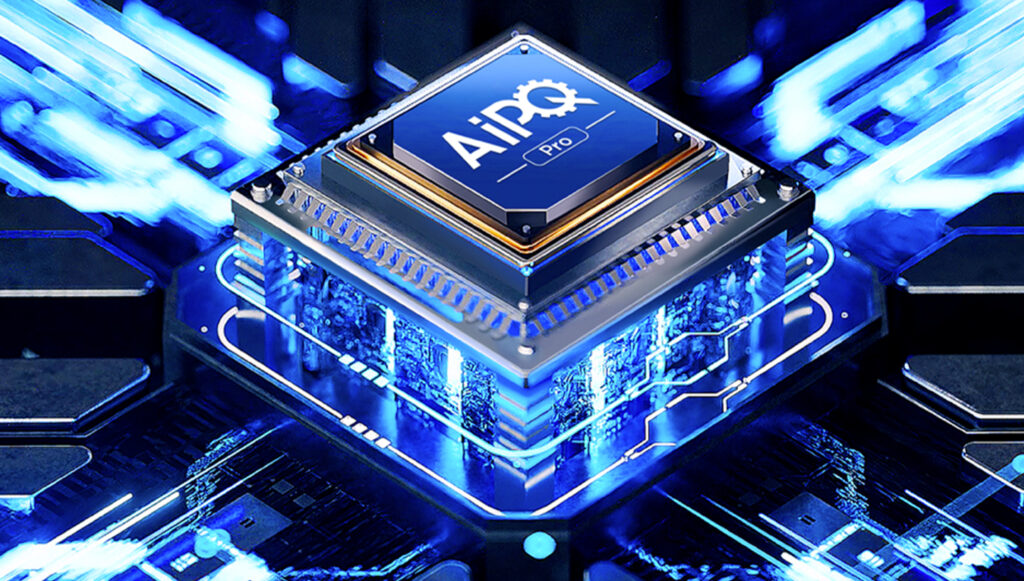
Smarter, Louder Smart TV
The T7 Series runs on Google TV. This platform gives access to thousands of apps and services, including Netflix, YouTube, and Disney+. Built-in Chromecast and Apple AirPlay 2 support allow wireless casting from Android and iOS devices.
TCL adds far-field microphones to all T7 models. This allows voice control without using the remote. The TVs also support Google Assistant, Amazon Alexa, and Apple HomeKit for smart home control. TCL includes a backlit voice remote and ships the unit with AAA batteries.
The 55-inch, 65-inch, and 75-inch models include a 2.0-channel speaker system, ranging from 20W to 30W. The 85-inch model features a 2.1 Onkyo speaker system with a built-in subwoofer and a total output of 40W. All models support Dolby Atmos and Dolby Digital+ formats to enhance spatial audio.
Ports, Power, and Peace of Mind
TCL includes four HDMI ports on each T7 TV, with one port supporting eARC. The TVs also come with USB 3.0 and USB 2.0 ports, Ethernet input, optical digital audio out, and RF input for antenna or cable. Wireless connectivity uses Wi-Fi 5 (802.11ac).
Other included features are sleep timer, multilingual on-screen display, closed captions, JPEG/MP3 playback from USB, and accessibility options. Power consumption remains under 0.5W in standby mode. The TVs do not carry Energy Star certification. Each model supports VESA wall mounting.
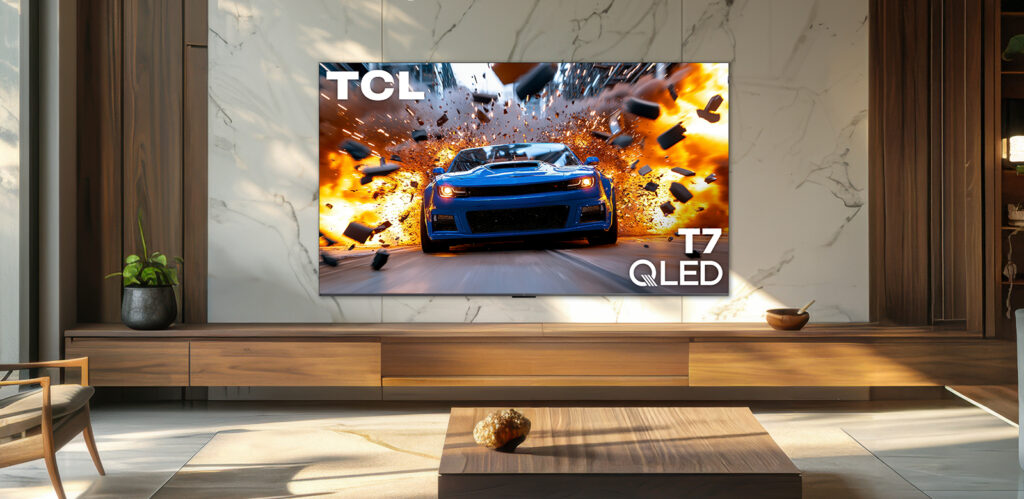
Value Without Compromise
TCL prices the 55-inch T7 at $599.99. The 65-inch model costs $699.99, the 75-inch version is listed at $899.99, and the 85-inch model comes in at $1,399.99. These prices make the T7 Series competitive in the mid-range segment. TCL has not announced a specific release date, but availability is expected by the end of the year.
The T7 Series checks many boxes for buyers who want a high-performance smart TV without entering the premium OLED or Mini LED space. With QLED visuals, 144Hz gaming support, advanced HDR compatibility, and solid audio options, the T7 Series stands out as a complete and well-rounded offering in its price class.
In related news, TCL CSOT showcases its printed OLED, Micro LED, MLED, and tri-fold display technologies at DTC2025, and TCL leads Double 11 TV sales once again as it strengthens its premium position with SQD Mini LED technology.
Buying Guides
What’s So Special About the RayNeo Air 4 AR glasses?
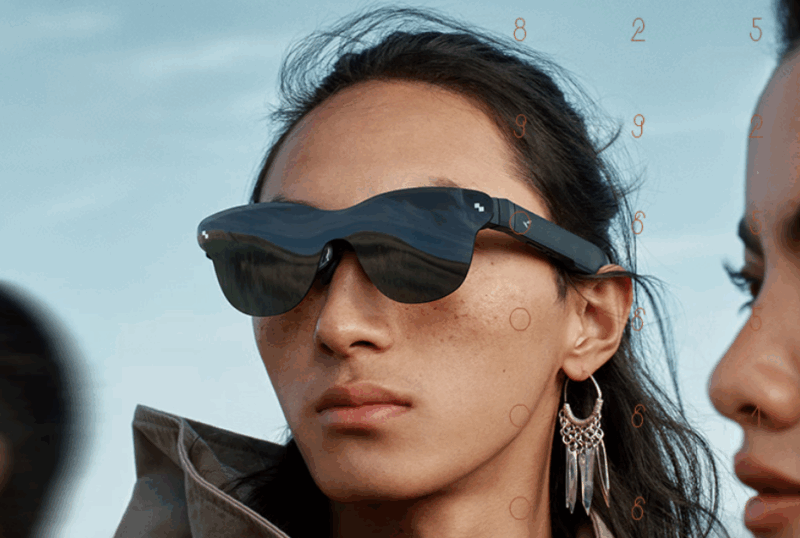
RayNeo has officially launched the Air 4 series in China, bringing major improvements in display, performance, audio, and comfort. The lineup includes the standard Air 4 and the premium Air 4 Pro. While its predecessor, the Air 3s Pro, continues to sell globally, the Air 4 series has just debuted in China and is expected to expand internationally in 2026. Let’s take a closer look at what makes this new generation of AR glasses stand out.
World’s First HDR10 AR Glasses
The RayNeo Air 4 is the first AR glasses product to support HDR10, setting a new benchmark for display technology in the category. The glasses include AI-powered SDR-to-HDR conversion, which upgrades non-HDR content to HDR quality on the fly. This enhancement improves contrast, deepens blacks, and boosts color depth without user intervention. The 1200-nit peak brightness ensures clarity even in well-lit environments.
Vision 4000 Display Processor
Both the Air 4 and Air 4 Pro use the Vision 4000 image-processing chip, co-developed by RayNeo and Pixelworks. The chip handles real-time tone mapping, white balance adjustment, and contrast enhancement. The Air 4 Pro supports 10-bit color output, delivering 10.7 billion colors, which results in a 64x improvement in tonal depth over standard 8-bit displays. This processing power ensures that image quality remains consistent across varied content and lighting conditions.

Micro-OLED Display and 3D Support
The glasses use 0.6-inch dual-layer Micro-OLED panels with support for 1920×1080 resolution in 2D and 3840×1080 in 3D mode. They simulate a 135-inch virtual screen viewed from 4 meters, suitable for streaming, gaming, or multitasking. With a 200,000:1 contrast ratio and 98% DCI-P3 color coverage, the display produces rich blacks, vibrant highlights, and accurate tones. The 120Hz refresh rate supports fluid motion during gameplay and high-frame-rate video.
TCL Optical Engine
RayNeo integrates TCL’s second-generation Peacock Optical Engine 2.0 across both models. The optics system benefits from TCL’s display calibration expertise and pushes color coverage up to 145% sRGB. The engine supports precise color tuning that meets the needs of video professionals and content creators. Visuals remain accurate, natural, and free from color drift, even in high-contrast scenes.

Bang & Olufsen Audio
The Air 4 series introduces a four-speaker audio system co-engineered with Bang & Olufsen. It supports spatial 3D surround sound, uses large polymer diaphragms, and employs a proprietary DAC algorithm to maintain clarity and balance. The sound-guiding fins reduce leakage by up to 80%. Whisper Mode focuses sound into the ears, ideal for quiet environments. The Air 4 Pro adds Surround Mode, expanding the soundstage for immersive content.
Comfort and Fit
RayNeo maintains a lightweight design at 76 grams across both models. The frame uses a balanced 46.7:53.3 front-to-back weight ratio to reduce strain on the nose and ears. The temples offer nine levels of adjustment, while the nose pads include three positioning levels, allowing the headset to fit a wide range of face shapes. Prescription lens support adds flexibility for nearsighted users.
Compatibility and Charging
The Air 4 series connects to smartphones, tablets, laptops, and gaming consoles, including the upcoming Nintendo Switch 2, using USB-C or HDMI adapters. The glasses support up to 100W Power Delivery passthrough charging, allowing users to continue viewing or gaming while their device charges in the background. This makes them suitable for long usage sessions without power interruptions.
Buy RayNeo Air 3s Pro From Official Website
In related news, global TV shipments fell below 50 million units in Q3 2025, marking a 4.9% year-over-year decline, and Redmi’s product manager stated that RGB OLED represents the future of display technology.

